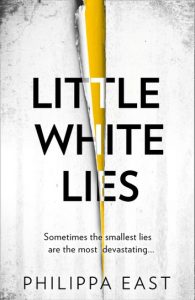Getting Ideas And What To Do With Them
Getting Ideas (And what to do once you’ve got them)
 As writers, we often get asked: “Where do you get your ideas from?” It’s a question that always tickles me. Perhaps it seems as though we writers have admittance to a special “world of ideas” that ordinary people can’t access? Perhaps we seem so much cleverer and wiser than non-writer folks? (I wish!)
As writers, we often get asked: “Where do you get your ideas from?” It’s a question that always tickles me. Perhaps it seems as though we writers have admittance to a special “world of ideas” that ordinary people can’t access? Perhaps we seem so much cleverer and wiser than non-writer folks? (I wish!)
As far as I can tell, ideas are out there bumbling around for anyone to take hold of. (Full disclosure: I get most of mine from watching TV.) Any time we find ourselves thinking, “that’s interesting”, “oh, that’s cool” or “wow, that’s weird”, we’ve had an idea.
Getting an idea isn’t necessarily the hard part (though: see below). I think the tricky part is recognising how that idea might be translated into a piece of work. When an idea crosses my path, I have to work out what on earth to do with it.
Could it be a novel? A short story? A screenplay? Perhaps this idea would make a fantastic piece of writing… but for someone else. (My husband often comes up with great ideas for stories, but I can’t imagine being the one to write them.) I also have to work out what kind of writing idea it is. Is it a character, a setting, a premise, a twist, or what?
When it comes to novels, in my experience having one idea usually isn’t enough to create a whole book (annoyingly). Whatever I’ve started with, there are still loads of other pieces I have to work out. For example if my initial inspiration is a character, I’ll still have to work out a bunch of plot points, a setting, an inciting incident, etc. Thousands of words’ worth of ideas!
Generally though, a novel concept feels like it has legs for me when two separate ideas come together in my head. This was how it worked for Little White Lies – and it’s part of what I’m now grappling with for Book 2! In addition, I’ve come to realise that – to sustain me over a whole novel – those ideas have to pull deeply at my heart and guts.
Little White Lies first began when I caught a snippet on the news about a family whose daughter had returned home after being missing for some weeks. There were so many question marks over what exactly had happened during that time… even whether she had been abducted at all. The news footage showed the family sitting in a courtroom, and I remember thinking, “what on earth are these people feeling right now? Do they trust each other at all?”
The second inspiration came as a visual of a parent getting separated from their child on a Tube train, as the doors accidentally closed between them. I had seen something similar happen on a London bus and the image stayed with me, vividly. Both of these ideas contained themes (family, trauma, trust) that resonated deeply with me, including in my work as a clinical psychologist.
These two ideas mooched around separately in my head for a good while. I regularly poked about at them both. But it was only when they bumped into each other that – bingo! – Little White Lies was conceived.
Over the next two years I wrote many, many drafts of this novel. Around draft twelve, I began submitting. After much rollercoastering, the agent I’d set my heart on offered a telephone call to discuss her ideas for a “revise and resubmit”. One of the editorial suggestions was to switch the book from single to dual POV (a massive task in itself). The second was to come up with a Really Big Twist.
I knew she was right; the book needed it. So, “Sure!” I said. “No problem!”
The stakes were high. Time was of the essence. So with massive stakes and significant time pressure, I sat down to get my fabulous idea.
I scribbled and wrote and outlined and brainstormed –
– And I got nada.
I threw myself harder into the process – wrote more outlines, thrashed out more plot points, forced down more notes. I brought myself to panic and tears. Nothing was working. The ideas just would not come.
In the end I had to stop. I put down my pens, threw away my pages of notes. I went to Scotland to visit my family and told myself to just. not. think about it. I ignored the days ticking by; I refused to dwell on all that I had to lose.
In that space, I got a glimmer of an idea. It flickered, faded, then grew brighter. It had been inherent in the book all along, seeded by all those multiple drafts. I emailed this precious idea to the agent. She loved it, and soon after, offered representation.
(Phew.)
So what have I learned about all of this? Well, ideas are out there, all over the place, all the time. Watching the news, reading books, going for long hikes and eavesdropping on people are all good ways to find them. Best to be doing the grunt work while waiting (the Muse loves a grafter).
Ideas cross our path all the time, although we have to think carefully about what we might mould them into. Sometimes ideas will just come hunt us down. But they can also, I think, be very shy creatures. So don’t go racing up at them, screaming, “come here!!” Better to turn your back and let them tiptoe up on you (or pounce).
Because, after all, perhaps that idea has been waiting for you, too.
—
Twitter: @philippa_east
Bio: Philippa East is a writer by night and a Clinical Psychologist by day. Her prize-winning short stories have been published in various literary journals, and Philippa’s debut novel Little White Lies will be published in February 2020 by HQ/HarperCollins.
LITTLE WHITE LIES
 She only looked away for a second…
She only looked away for a second…
Anne White only looked away for a second, but that’s all it took to lose sight of her young daughter.
But seven years later, Abigail is found.
And as Anne struggles to connect with her teenage daughter, she begins to question how much Abigail remembers about the day she disappeared…
Addictive, edge-of-your-seat dark women’s fiction perfect for fans of Jodi Picoult, BCC drama Thirteen, and Emma Donoghue’s Ro
Category: On Writing
























